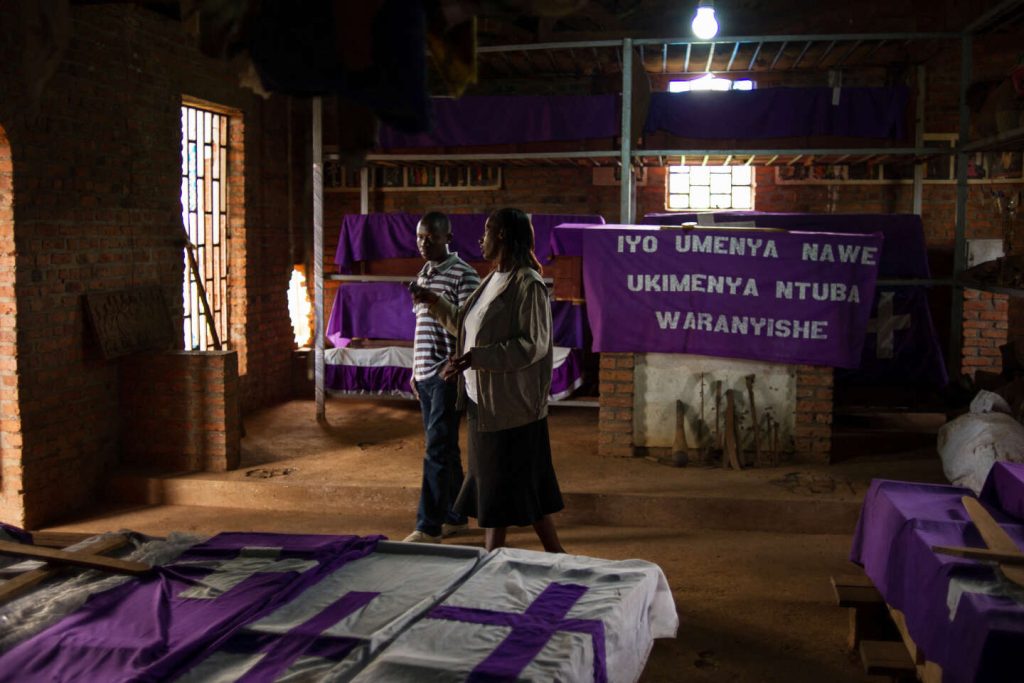The Nyamata Church Genocide Memorial in Rwanda serves as a somber reminder of the atrocities committed during the 1994 genocide against the Tutsi people. A photograph taken by Gilles Peress in 1994 depicting a corpse in front of a large white marble Christ with outreached arms at the Nyarubuye church highlighted the fact that many killings took place in or near religious buildings. Around 12% of the victims were killed in churches, with approximately fifty catholic churches identified as massacre sites where thousands lost their lives.
Unlike previous pogroms against the Tutsi where churches and temples had been spared, in 1994 the Tutsi sought refuge in these religious buildings only to be met with death. The sanctuaries that were once hoped to provide safety became deadly traps. The fact that so many places of worship became sites of slaughter raises questions about the role of religion in the genocide. Historians Stéphane Audoin-Rouzeau and Hélène Duas see the religious dimension of extreme violence as a key aspect of the Rwandan genocide, setting it apart from other mass killings of the contemporary era.
The massacres that claimed around 1 million lives between April and July 1994 were not a religious war, as the violence was not between different religious groups but rather within the Christian population, which made up the majority of Rwanda. Catholicism was particularly prevalent, with about 60% of Rwandans identifying as Catholic. The violence was based more on ethnic reasons than religious ones, with Hutu killing their Tutsi neighbors, rather than targeting based on religious affiliation.
Historian Rémi Korman agrees that the genocide in Rwanda was not about religious conflict but rather stemmed from ethnic divisions. However, he notes that religion played a significant role in Rwandan society, and the genocidaires sometimes used religious rhetoric to justify the political violence that was occurring. The intertwining of religion and politics in Rwanda added another layer of complexity to the genocide, with violence being carried out for political reasons but sometimes taking on a religious tone.
The Nyamata Church Genocide Memorial stands as a testament to the horrors of the genocide, with the memory of the victims preserved for future generations to remember. The chilling images and stories of what took place in Rwanda serve as a reminder of the devastating consequences of hate and division. The memorial also serves as a place of reflection and education, ensuring that the lessons learned from the genocide are not forgotten and that efforts are made to prevent such atrocities from happening again in the future.


